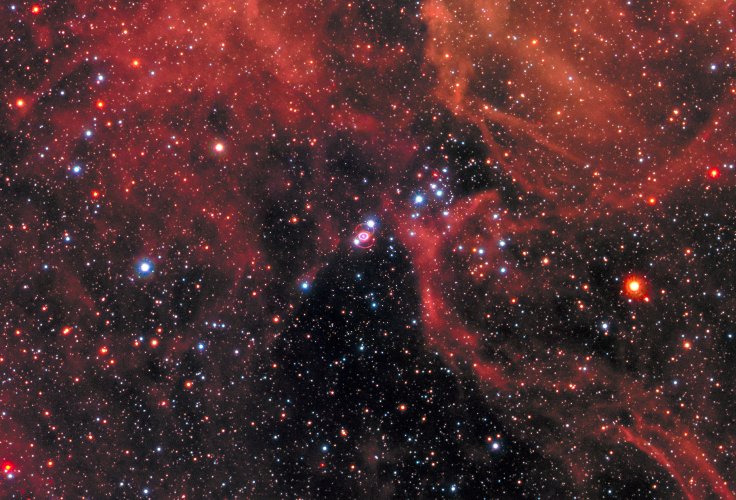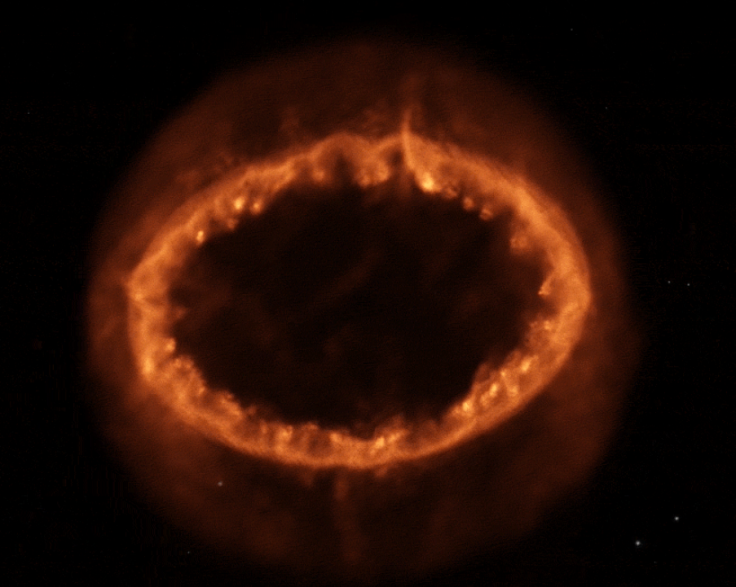Supernova 1987A Revisited: New Observations Mark 30th Anniversary Of Stellar Explosion

When a star goes supernova, it seeds the universe with elements such as carbon, nitrogen, oxygen and iron — the “star stuff” that is the basic component of all life as we know it. Through the study of supernovae, scientists have not only gleaned crucial insights into the distribution of elements in space, they have also discovered that we live in an expanding universe.
If there is one supernova that steals the limelight, it would be SN 1987A — an explosion whose light washed over Earth on Feb. 23, 1987. Because of its relative proximity to Earth (it is located in the Large Magellanic Cloud, just over 160,000 light-years from Earth), SN 1987A has, over the past three decades, become the most extensively studied supernova.
To commemorate the 30th anniversary of SN 1987A, the Hubble Space Telescope — which has been repeatedly observing SN 1987A since 1990 — recently snapped another image of the supernova remnant. The image, along with observations made using NASA’s Chandra X-ray Observatory and the European Southern Observatory’s Atacama Large Millimeter/submillimeter Array (ALMA), have now been released.
“The latest data from these powerful telescopes indicate that SN 1987A has passed an important threshold,” NASA said in a statement. “The supernova shock wave is moving beyond the dense ring of gas produced late in the life of the pre-supernova star when a fast outflow or wind from the star collided with a slower wind generated in an earlier red giant phase of the star's evolution.”
What lies beyond the ring — a structure that has an uncanny resemblance to Sauron’s ring of power from “The Lord of The Rings” — is still poorly known. Especially in the past few years, parts of the the ring, which had been, between 1999 and 2013, seen getting steadily brighter in X-rays, have started to fade.

“From about February 2013 until the last Chandra observation analyzed in September 2015 the total amount of low-energy X-rays has remained constant,” NASA said. “These changes provide evidence that the explosion's blast wave has moved beyond the ring into a region with less dense gas. This represents the end of an era for SN 1987A.”
Scientists believe that further observations of SN 1987A — an object that once blazed with the power of a 100 million suns — could reveal crucial clues to the early stages of dispersal of elements through interstellar space.
“A supernova remnant cools quickly, so within a few years the heavy elements formed in the star can form molecules and condense into dust, turning the remnant into a veritable dust factory,” Remy Indebetouw from the National Radio Astronomy Observatory in Virginia said in a statement. “ALMA is now able to see this newly formed dust directly, and ongoing studies will help us understand how it forms and how supernovas seed interstellar space with the raw material for new planetary systems.”
Studies involving the latest observations made using Hubble, ALMA and Chandra are now available online.
© Copyright IBTimes 2024. All rights reserved.












